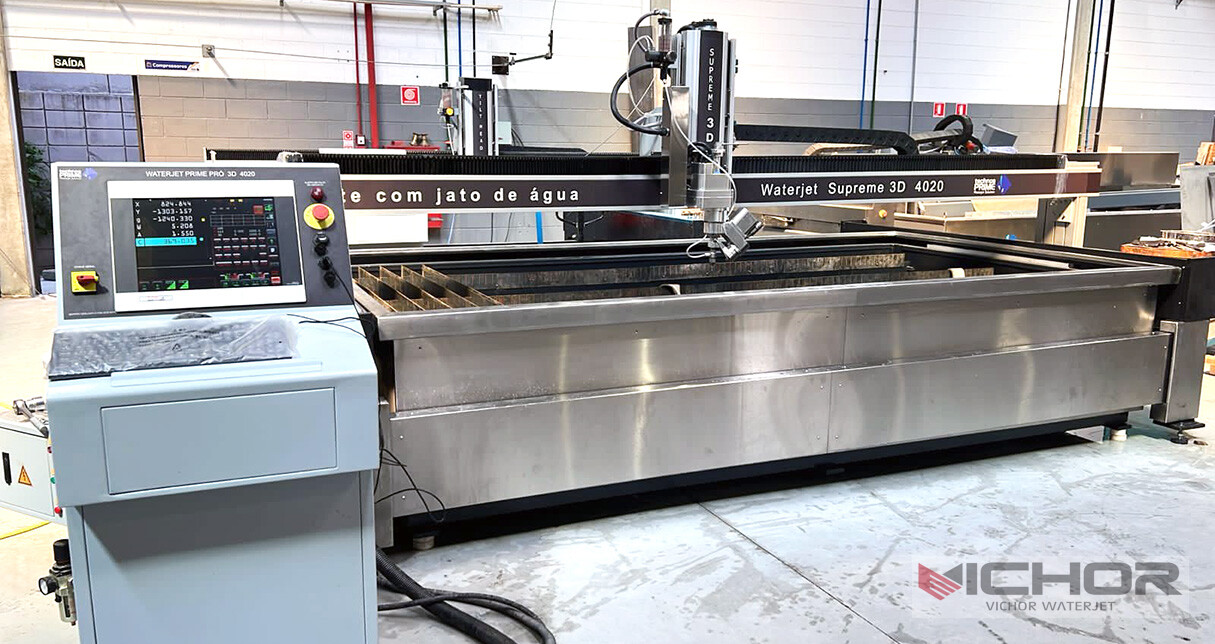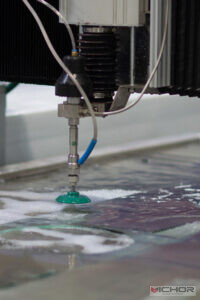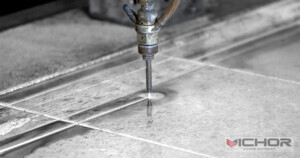
Local Waterjet Cutting: Unlock Precision, Versatility, and Efficiency in Your Community
In today’s competitive manufacturing landscape, accessing advanced fabrication technologies quickly and efficiently is paramount. Local waterjet cutting services have emerged as a critical resource for businesses seeking high-precision, versatile, and material-friendly cutting solutions without the delays and costs of long-distance outsourcing. This powerful process harnesses the force of ultra-high-pressure water, often mixed with an abrasive garnet, to slice through virtually any material with exceptional accuracy and minimal thermal distortion. Choosing a local waterjet cutting provider offers distinct advantages that can significantly streamline your production process, reduce lead times, and enhance project flexibility. Let’s explore the multifaceted benefits and considerations of leveraging local waterjet cutting.
1. Understanding the Waterjet Cutting Technology: Pure Power and Abrasive Precision
At its core, waterjet cutting is a cold cutting process. It utilizes a high-pressure pump (typically generating pressures between 30,000 to 90,000+ PSI) to force water through a tiny orifice (diamonds or sapphires are common), creating a supersonic stream. For cutting harder materials like metals, stone, glass, or composites, an abrasive material (usually garnet sand) is introduced into this high-velocity water stream within a mixing tube. This creates an abrasive waterjet – an incredibly focused and powerful erosive tool.
Cold Cutting Advantage: Unlike laser, plasma, or flame cutting, waterjet generates no significant heat-affected zone (HAZ). This is crucial for materials sensitive to heat, such as certain tool steels, tempered materials, plastics, laminates, and exotic alloys, preventing warping, hardening, or structural changes along the cut edge.
Material Versatility: This is arguably the waterjet’s greatest strength. A single local waterjet cutting machine can effortlessly transition from cutting intricate patterns in delicate 1mm thick copper foil to slicing through 12-inch thick titanium, granite blocks, rubber gaskets, bulletproof glass, or layered composites. This eliminates the need for multiple dedicated cutting machines.
Kerf and Taper: The abrasive waterjet stream creates a narrow kerf (cut width), typically ranging from 0.02″ to 0.05″ (0.5mm to 1.3mm), depending on the orifice size, pressure, and material thickness. While a slight taper (wider at the top than the bottom) is inherent, especially in thicker materials, advanced machines and cutting techniques can minimize this effect significantly.
2. Unparalleled Material Versatility: One Machine, Endless Possibilities
The ability to cut such a vast array of materials makes finding a local waterjet cutting service incredibly valuable. Consider the breadth:
Metals: Stainless steel, aluminum, titanium, brass, copper, tool steel, armor plate, mild steel, Inconel, Hastelloy, bronze. No reflectivity or conductivity issues like with lasers.
Stone & Tile: Granite, marble, slate, travertine, porcelain tile, engineered stone – perfect for intricate countertop inlays, signage, and architectural features.
Glass: Thick or thin, tempered or annealed (though tempered glass requires special handling before cutting), laminated glass – ideal for decorative panels, windows, and partitions.
Composites: Carbon fiber, fiberglass, Kevlar, honeycomb structures – crucial for aerospace, automotive, and sporting goods without delamination or fraying.
Plastics & Polymers: Acrylic (Plexiglas), polycarbonate (Lexan), PVC, HDPE, UHMW, nylon, rubber, foam (without melting) – essential for signage, prototypes, gaskets, and insulators.
Foam: All densities – for packaging, molds, flotation, and insulation.
Food: Surprisingly, pure waterjets are used for food portioning (cakes, frozen foods, poultry) in hygienic environments.
Having this capability nearby means rapid prototyping across diverse materials and the flexibility to handle unexpected material requirements without project delays.
3. Precision and Intricate Detail: Beyond Simple Shapes
Modern local waterjet cutting services are equipped with sophisticated CNC (Computer Numerical Control) systems and high-precision motion components. This translates to:

High Tolerance Cutting: Capable of holding tight tolerances, often within ±0.003″ to ±0.005″ (±0.075mm to ±0.13mm) or better, depending on material, thickness, and machine calibration. This rivals many machining processes for profile accuracy.
Complex Geometries: Waterjets excel at cutting intricate contours, sharp internal corners (down to very small radii), fine details, and complex patterns that would be difficult, impossible, or prohibitively expensive with mechanical methods like milling or punching. Think intricate decorative metalwork, complex gaskets, or precise aerospace components.
Near-Net Shape: The precision allows parts to be cut very close to their final dimensions, minimizing or even eliminating the need for secondary machining operations in many cases, saving significant time and cost.
No Tooling Required: Unlike stamping or die-cutting, waterjet cutting requires no hard tooling. The “tool” is the digital CAD file. This makes it ideal for low-volume production, one-offs, prototypes, and design iterations. Changes are made in software, not by machining expensive dies. Your local waterjet cutting shop can turn your digital design into reality overnight.
4. The Compelling Advantages of “Local”: Speed, Responsiveness, and Partnership
This is where the “local” aspect truly shines. Choosing a local waterjet cutting provider offers tangible benefits over sending work across the country or overseas:
Drastically Reduced Lead Times: Eliminate shipping time for both raw materials and finished parts. Quotes often come faster, jobs can be scheduled more flexibly, and parts can be picked up or delivered locally within hours or days, not weeks. This accelerates time-to-market and improves responsiveness to urgent needs.
Lower Shipping Costs: Transporting heavy metal plates, thick stone, or bulky finished parts over long distances is expensive. Keeping the entire process local slashes these logistics costs significantly.
Enhanced Communication & Collaboration: Face-to-face meetings are possible. You can easily visit the facility to discuss projects, review samples, inspect setups, or address challenges in real-time. Misunderstandings are minimized through clearer, faster communication channels.
Supporting the Local Economy: Partnering with a local waterjet cutting business contributes directly to your community’s economic ecosystem, fostering local jobs and business growth.
Improved Quality Control & Problem Solving: Proximity allows for easier resolution of any quality issues. Quick adjustments or recuts can be handled promptly without the delays and complexities of international or cross-country returns and replacements.
Prototype Iteration Speed: Rapid design changes are feasible. Get a physical part back quickly, evaluate it, make adjustments to the CAD file, and have a revised version cut locally often within the same day or the next.
5. Cost-Effectiveness: Beyond the Price Per Inch
While the initial price per inch of cut might sometimes be higher than some thermal processes (like plasma on mild steel), local waterjet cutting often proves more cost-effective overall when considering the total project lifecycle:
No Heat-Affected Zone (HAZ): Eliminates the cost of secondary operations to remove HAZ (grinding, machining) or the cost of material ruined by heat distortion.
Minimal Secondary Processing: The smooth, sandblasted-like finish often requires little to no edge finishing for many applications. Precision reduces scrap and the need for machining.
Material Savings: Nesting software optimizes part placement on raw material sheets, significantly reducing waste, especially for expensive exotic alloys or stone.
Reduced Fixturing: The cutting force is relatively low and downward-directed, often requiring simpler (or no) fixturing compared to heavy machining operations.
No Consumable Tool Wear (in the traditional sense): While abrasives and nozzles wear, there are no expensive cutters, drills, or blades to replace frequently. The cost of garnet and wear parts is factored into the per-inch price.
Avoided Logistics Costs: As emphasized earlier, the savings on shipping materials and parts by using a local waterjet cutting service directly impact the bottom line.
6. Environmental and Safety Considerations
Local waterjet cutting also aligns well with modern environmental and safety priorities:
Reduced Carbon Footprint: Shorter supply chains mean significantly lower transportation emissions compared to outsourcing fabrication far away.
Hazardous Fumes/Vapors: Waterjet cutting produces minimal fumes (primarily dust from the abrasive and material, captured by water). There are no toxic fumes generated by burning materials (like plasma or laser cutting certain plastics), making it a cleaner process for the shop environment. Dust collection systems effectively manage airborne particles.
Noise Levels: While not silent, waterjets are generally quieter than many heavy machining operations or plasma cutting tables.
Waste Management: The primary waste is spent abrasive garnet mixed with fine particles of the cut material (sludge). This sludge is non-toxic (assuming the cut material isn’t hazardous) and can often be recycled or disposed of in landfills. Water is typically filtered and recirculated within the machine.
7. Identifying the Right Local Waterjet Cutting Partner
Finding the best local waterjet cutting service requires some research:
Machine Capabilities: Inquire about maximum pressure (higher = thicker cutting potential), table size (determines maximum part size), accuracy specifications, and whether they have pure waterjet (for softer materials) capabilities.
Material Experience: Ask specifically about their experience with the materials you commonly use. Cutting 10-inch titanium requires different expertise than cutting thin acrylic.
Software & CAD Compatibility: Ensure they can work with your file formats (DXF, DWG, STEP, IGES, AI, PDF, etc.) and have advanced nesting software.
Quality Control Processes: What inspection tools do they use (calipers, micrometers, CMM)? Do they provide material certifications?
 Turnaround Time & Capacity: Get a realistic estimate for standard jobs and inquire about their capacity for rush work.
Turnaround Time & Capacity: Get a realistic estimate for standard jobs and inquire about their capacity for rush work.
Secondary Services: Do they offer finishing (deburring, edge polishing), forming, welding, or assembly? This can be a major convenience.
Visit the Facility: If possible, visit your prospective local waterjet cutting shop. Assess cleanliness, organization, equipment maintenance, and safety practices.
Local waterjet cutting is far more than just a convenient cutting option; it’s a strategic manufacturing asset accessible within your community. Its unparalleled versatility across materials, exceptional precision for complex shapes, cold-cutting nature, and inherent design flexibility make it an indispensable solution for countless industries, from aerospace and automotive to architecture, art, and food processing. By choosing a local waterjet cutting provider, you amplify these benefits through drastically reduced lead times, lower logistics costs, enhanced communication, and the ability to build a responsive, collaborative partnership. Whether you need rapid prototypes, low-volume production runs, or intricate one-off pieces, leveraging the power of local waterjet cutting provides a competitive edge through efficiency, quality, and speed, right in your own backyard. Explore the capabilities of your nearby local waterjet cutting services today and discover how they can transform your fabrication workflow.
continue reading
Related Posts
- 1371 words6.9 min read
- 1449 words7.3 min read



